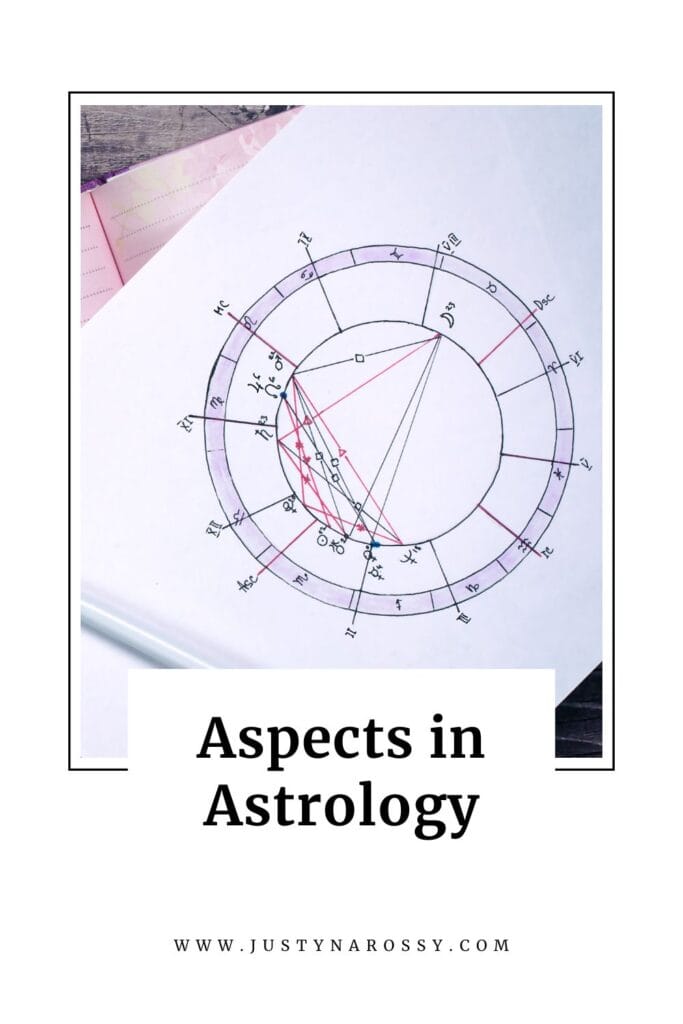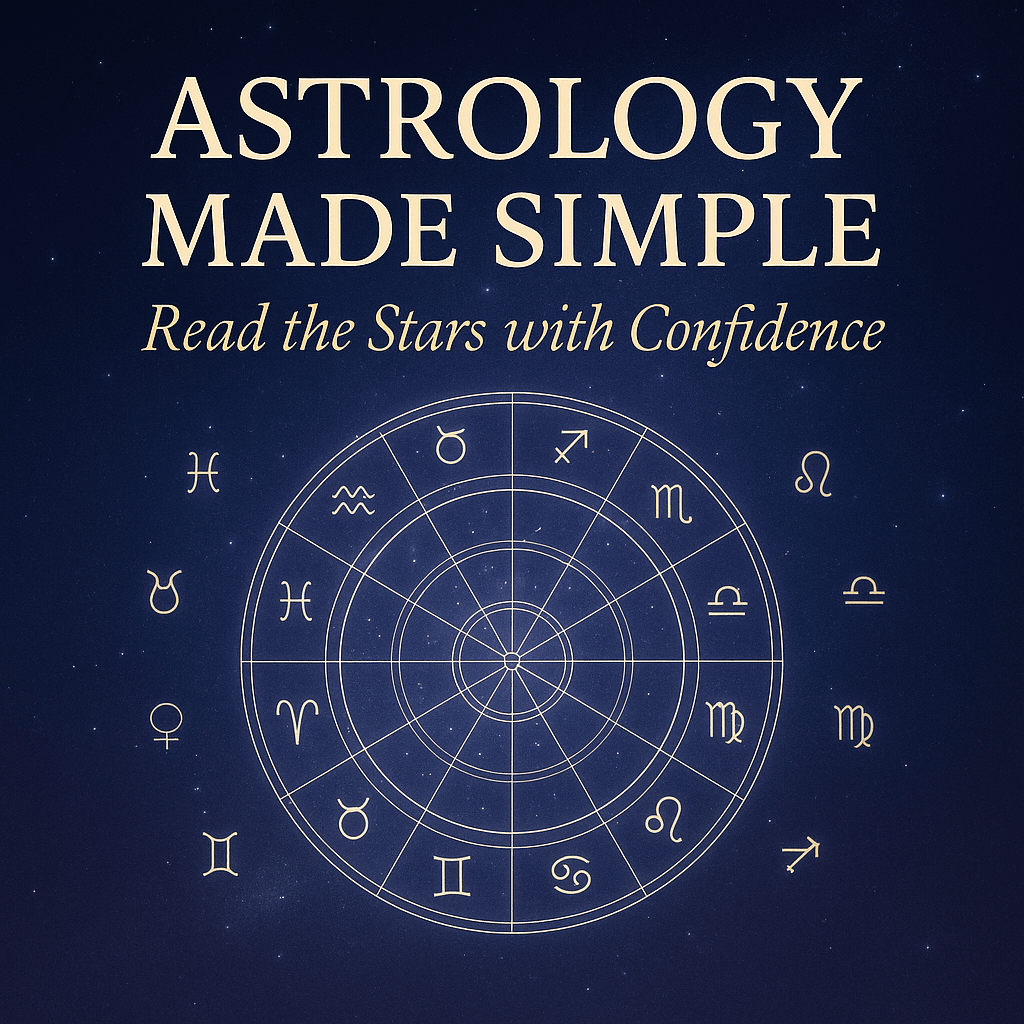
In astrology, aspects are the connections between planets that reveal how they interact with one another in your birth chart. These planetary conversations create energy flows that can either be harmonious, challenging, or a mix of both, influencing your personality, behaviour, and life experiences. Understanding aspects is key to interpreting the dynamic energy of a chart, offering insight into how different parts of your life work together or create tension.
What Are Aspects?
Aspects are the angular distances, measured in degrees, between two planets in an astrological chart. These angles create relationships between planets, symbolising how their energies combine, conflict, or support each other. The closer the aspect is to exact (i.e., when the planets are nearly the same number of degrees apart as the aspect dictates), the stronger its influence will be. The nature of the aspect is determined by the angle formed, and this can range from smooth, flowing energy to tense, challenging interactions. There are five major or “Ptolemaic” aspects, along with several minor aspects that offer additional layers of insight.
Subscribe to my Newsletter and always know what’s going on!
The Five Major Aspects
- Conjunction (0°) – a conjunction occurs when two planets are in the same degree of the same sign, or within close proximity. The energies of the planets involved are fused together, creating a powerful and concentrated focus on the qualities they represent. Conjunctions can be harmonious or challenging, depending on the nature of the planets involved. For example, a Sun-Venus conjunction often brings harmony and love, while a Mars-Saturn conjunction can feel restrictive and tense.
- Sextile (60°– a sextile occurs when two planets are 60 degrees apart, typically between compatible elements (e.g., fire and air, or earth and water). This is a harmonious aspect, indicating opportunities for cooperation and growth. The planets involved work together easily, helping you express the positive qualities of both. For example, a Mercury-Moon sextile can enhance emotional intelligence and communication, making it easier to express your feelings.
- Square (90°) – a square occurs when two planets are 90 degrees apart, creating friction and tension between them. This aspect is challenging, but it can also be a powerful motivator for growth and change. Planets in square require effort to integrate, often pointing to areas of life where you may experience conflict or need to overcome obstacles. A Mars-Pluto square, for example, might create power struggles or intense, transformative challenges.
- Trine (120°) – a trine occurs when two planets are 120 degrees apart, usually in signs of the same element (fire, earth, air, or water). This is a highly supportive aspect, where the energies of the planets flow easily and naturally. Trines indicate talents, strengths, and areas of life where things seem to work effortlessly. A Sun-Jupiter trine, for instance, may bring optimism, success, and growth with little resistance.
- Opposition (180°) – an opposition occurs when two planets are 180 degrees apart, standing opposite each other in the zodiac. This aspect creates a dynamic tension between opposing forces, often pulling you in two different directions. Oppositions can feel like a balancing act, where you need to find compromise and integration. For example, a Moon-Saturn opposition might create an internal struggle between emotional needs and responsibilities, urging you to balance personal care with duty.
Minor Aspects
In addition to the major aspects, astrologers also consider minor aspects, which provide additional nuances to a chart. These aspects are often subtler in their influence but still offer valuable insight into specific dynamics.
- Quincunx (150°) – this aspect creates an uneasy connection between two planets, often representing misalignment or a need for adjustment. Planets in quincunx don’t naturally understand each other, so they require work to find harmony.
- Semisextile (30°) – a softer aspect that suggests a minor area of tension or potential. While not as strong as a square, a semisextile can still indicate areas that need balancing or integration.
- Quintile (72°) – this aspect represents creativity and talent, offering the potential for unique solutions or artistic expression. It’s less common but powerful in charts where creativity plays a major role.
How to Interpret Aspects
When interpreting aspects, consider the planets involved, the signs they occupy, and the houses they rule. The nature of the planets tells you the type of energy being expressed (e.g., Mars for action, Venus for love), while the aspect itself indicates whether that energy flows harmoniously or creates tension.
For example:
- A Sun trine Moon suggests emotional harmony and a strong connection between your inner self and outward identity. You likely feel comfortable with who you are, and your needs and desires are in sync.
- A Mercury square Saturn, on the other hand, may indicate struggles with communication or mental blocks. You may find it challenging to express yourself or face learning challenges, but through perseverance, this aspect can help you develop discipline and mental focus.

Read More
- Saturn Return: The Cosmic Rite of Passage That Transforms Your Life
- 10th House Stellium in Astrology
- Astrology for Beginners: How to Read a Birth Chart
- Aspects in Astrology
- Modalities in Astrology: Cardinal, Fixed and Mutable

Welcome! 🌟 My name is Justyna, and I use Astrology and Human Design as a tool to help others navigate various aspects of life. If you’re interested in booking a personal astrology or a human design reading click here. In addition to personalised readings, I also share weekly and monthly insights on my YouTube Channel. Feel free to explore my work on Medium, Subscribe to my monthly newsletter and if you find what I do helpful, you can show your support by buying me a coffee! ☕ Thank you for stopping by, and I look forward to connecting with you! 😊